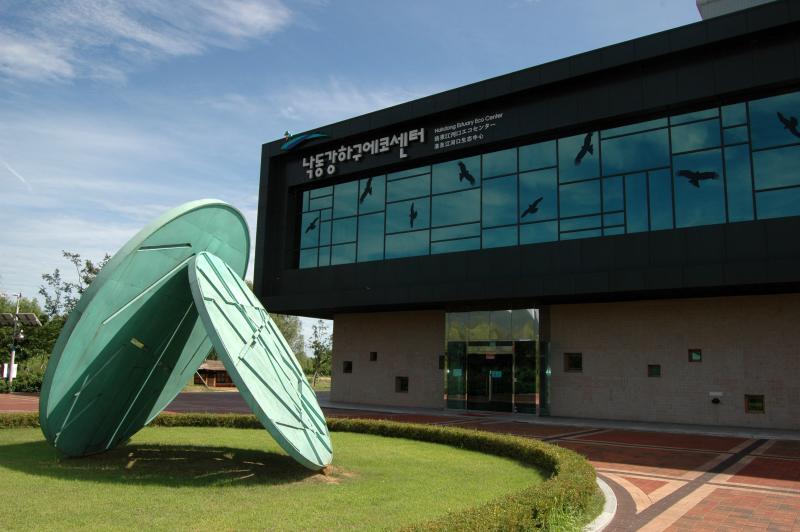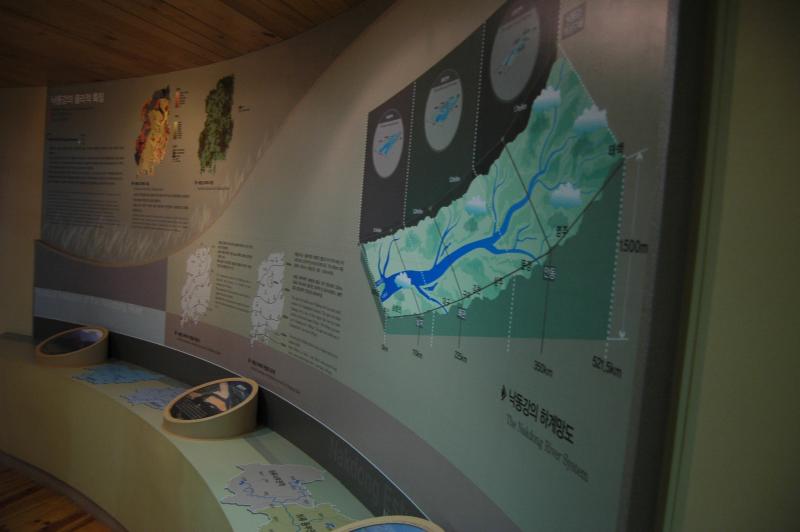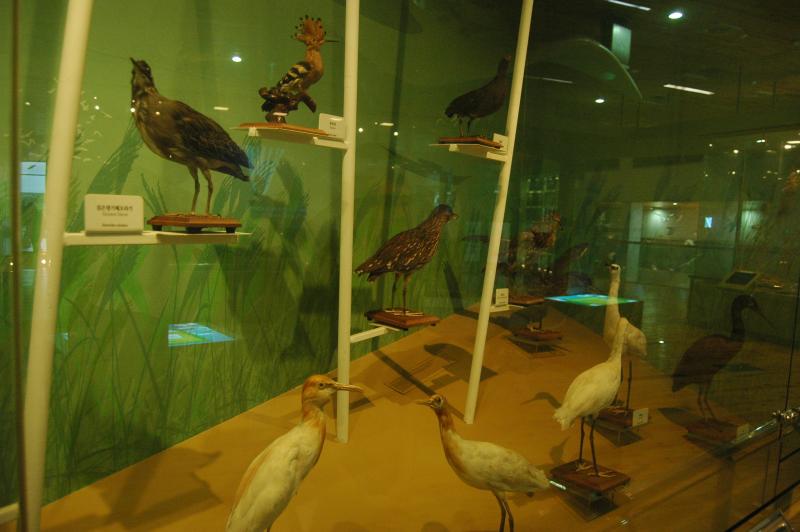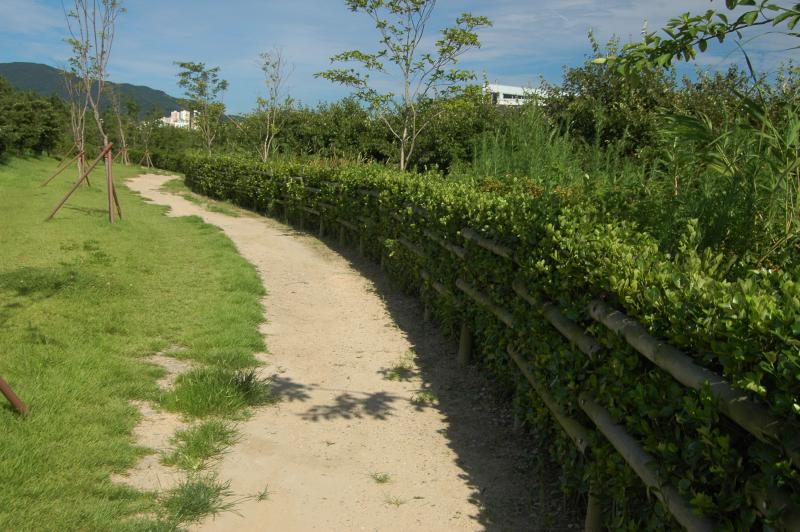
Although it's not yet considered one of the 'must-see' destinations while in Korea's second-largest city, western Busan holds the Nakdong Estuary Migratory Bird Park and Eco Center (낙동강하구에코센터). With 37.7 square kilometers of the southern coast protected, there's plenty of room for the birds to roam or migrate. There's enough room for humans to enjoy a picnic, as well.

When entering, it becomes fairly obvious that the Eco Center may be for the humans, but most of the 2.71 square kilometer park is for the birds. The majority of the park is a restricted area for the public, and street lamps are turned off at 8pm to minimize disturbing the birds. Fine by me - I just want to see them doing...something...

The Eco Center near the park entrance is surprisingly excellent - it has been designed to both see the animals migrating here and learn about them at the same time. Recently constructed, there's quite a bit of English available - and a lot of activities are geared towards kids.


The displays were quite realistic - definitely one highlight. Migratory birds come to Korea starting in late March, stay for the summer, and head south to Australia, India, Malaysia, and elsewhere in early September. This is about as close as you'll get to seeing birds until later, though.

An example of some phytoplankton in the estuary - not exactly the prettiest thing in the world. A light would shine through one example at a time while giving it's name on a spinning circle.

One of your fairly standard touchscreens programmed to offer plenty of information at a kid's height. It's unusual in that everything appears to be available in English; most of the text seems written to adults, however.

After quite a few exhibits throughout the floor, it's finally time to take a look out the window and look for some birds!

Yep, there's land... and water... The Lady in Red and I strained our eyes looking for actual birds...

Look inside the bird's head through a pair of built-in binoculars; you'll be disappointed unless you're looking in the right spot... It probably has something to do with the fact that it's freakin' hot and the middle of a Korean summer.

There's some birds! Looking them up on the self-controlled CCTV camera almost doesn't seem fair.

After leaving the Eco Center, we walked around looking for more birds. There's plenty of land - unfortunately not a whole lot of views (or birds). Before long, the heat forced us to turn around and move on - definitely an area to come back to see a different time of year.

Before getting on the bus, however, we meandered to the other side of the street. The Korea Water Resources Development Corporation (AKA K-Water) has a little park in the midst of the company's buildings, along with a huge statue celebrating the birds.
Although July is probably not the best time of the year to see the birds, the area holds a lot of promise. Expat kids and families will find plenty to see and learn in the Eco Center, but seeing the birds would probably be best in the spring or fall.
Ratings (out of 5 taeguks):
Ease to arrive:
Foreigner-friendly:
Convenience facilities:
Worth the visit:
Directions to Nakdong Estuary Eco Center: Get to Busan. Take line 1 of the Busan subway system to Hadan station (next to last stop on the western end). Take exit 3 to street level, then cross the street to the bus stop in the middle of the road (you want to go right, or west). Get on bus 58, 58-1, 58-2, or 221. The bus will cross a river shortly after you get on - get off at the first stop after crossing the river. Cross the pedestrian overpass and follow the road to the entrance. Open 8am - 6pm (last tickets sold at 5pm); Free admission as of July 2010, lockers available for a 100 won coin.
Share ![]() Bookmark this on Delicious
Bookmark this on Delicious
This post was originally published on my blog, Chris in South Korea. If you are reading this on another website and there is no linkback or credit given, you are reading an UNAUTHORIZED FEED.







 RSS Feed
RSS Feed
Recent comments